Signals
Just as you believe that air is everywhere, Similarly in today’s cyberspace world or say digital world, we can say that Signals are everywhere. While you move your hand it might be an interference to some signal. Well these are the radio waves which will be discussed in detail later. While you communicate with someone using your cellphone or computer or any other device, it simply sends the message you want to convey in the form of a signal.
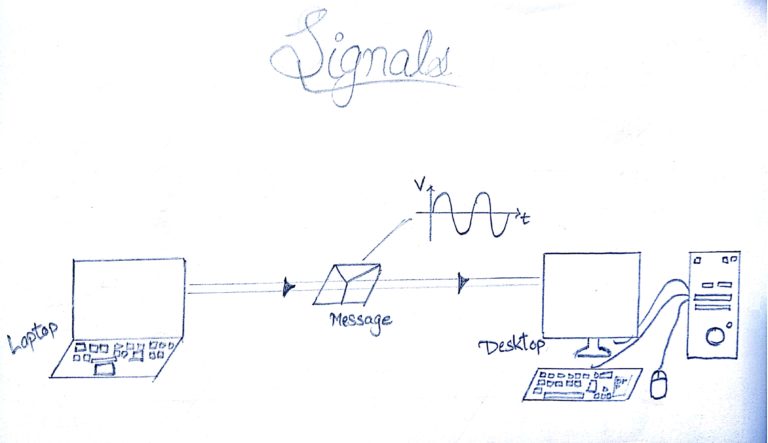
So basically, when you say a signal, you represent some voltage for a period of time. The voltage here is the time-varying quantity which holds the information.
The signals are transmitted and received from one device to another device in the form of video, audio or some form of packet holding an encoded data. These signals either travel through wire or using air as a medium.
Signals are of two types : analog and digital.
The world around us is full of infinities. And we call these infinities as ANALOG. For example, there are infinite number of colour shades you can choose from to paint an object. Infinite number of sounds or tones exist, even smell. Infinite number of pictures your eyes can capture. There are infinite number of angles that your arm can move in. All these have infinite possibilities making them all ANALOG in nature. Examples, signals from microphone or speaker, temperature changes, antenna, and even tv.
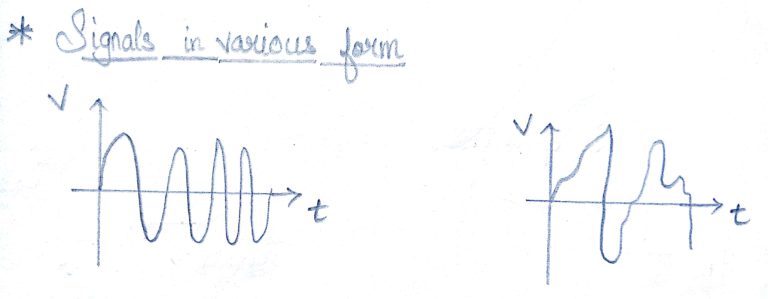
On the contrary, Digital signals deal in the realm of the discrete or finite, which means there is a limited set of values they can be in. That could mean just two total possible values, 235, 21, 994, 1005, 576 or anything as long as it’s not ∞ (infinity). Common examples are digital clocks, computers, calculator, 7-segment display, switch, etc. While talking about devices, they have to deal with both the signals that is analog as well as digital. Some devices may support these languages and the rest may support only one of them. Just as a translator is needed for an Indian to understand a message which is written in French. So Conversion or say translation of languages is required in case of signals also. So using some external components or devices we convert the signals into the other form.
Analog Signals :
Analog means continuous. Thus, analog signals, refers to continuously varying signals. This means that, voltage changes at every instance of time. Thus, there are infinite number of voltage levels. This signal should look, smooth. It is represented on a graph, with time being on y-axis, and voltage being on the x-axis.
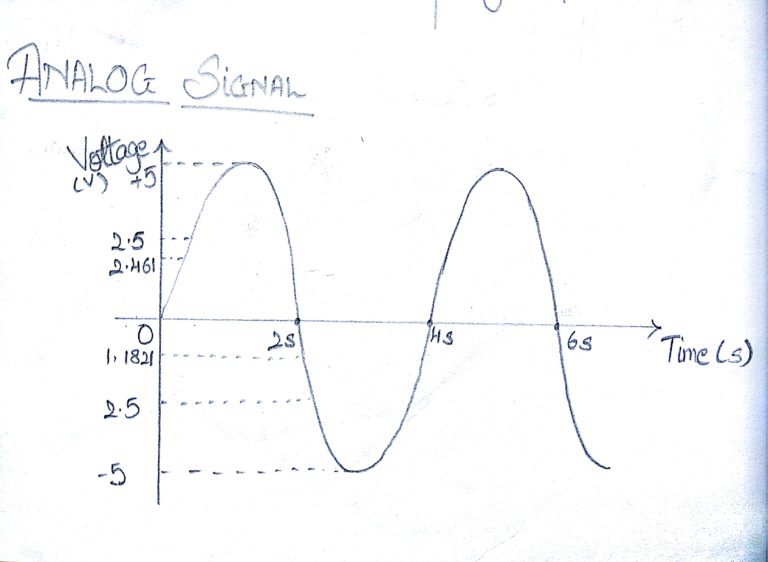
Though, these signals can be limited within a given maximum and minimum range, it would still have infinite possibilities of voltage level, that is in decimal values. Say range is +5V to -5V, but there exist, infinite number of voltage level even between 4.9 and 5 V for example, 4.95, or 4.9 0 0 0 1. Video and Audio are the best examples of the analog signals. They are recorded in analog signals.
Digital Signals :
Digital signals, as we discussed have limited sets of values. The values, can be between 2 and a number, which isn’t equal to infinity. Most probably, digital signals are represented in two values , ‘0’ and ‘1’, where 0 usually represents 0V, whereas 1 represents 5V.
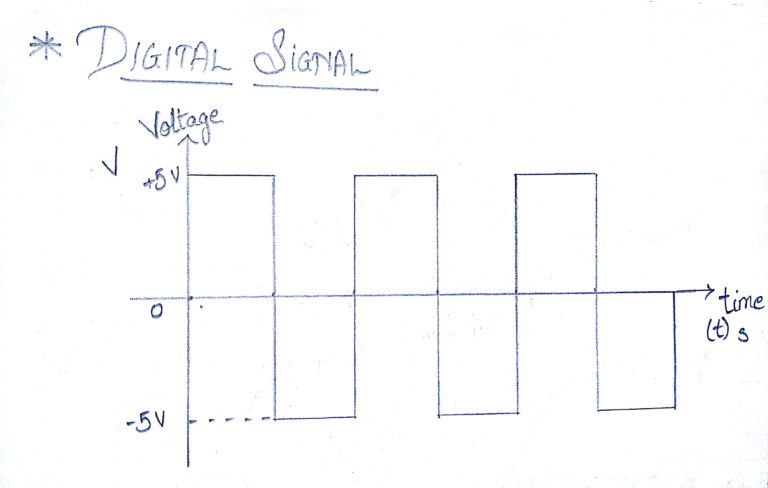
The digital signal waves in the graph isn’t a smooth one, rather, is like a step which we call a Square Wave. The Analog wave is called a Sine wave. Examples of digital signals are, data transmission from laptop to your pendrive.
There are various types of signals :
Continuous and discrete
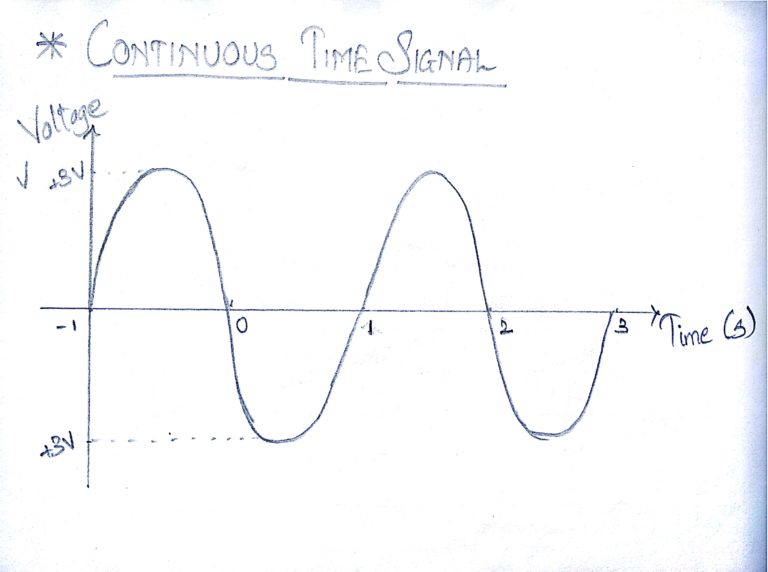
A continuous-time signal is a signal that can be defined at every instant of time. A continuous-time signal contains values for all x-axis.
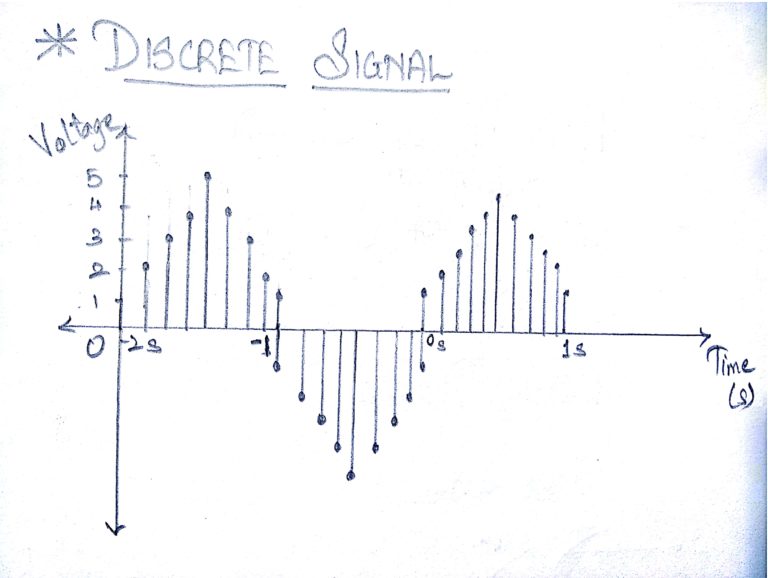
Signals that can be defined at discrete instant of time is called discrete time signal. Basically discrete time signals can be obtained by sampling a continuous-time signal.
The signals that are discrete in time and quantized in amplitude are called digital signal. The term “digital signal” applies to the transmission of a sequence of values of a discrete-time signal in the form of some digits in the encoded form. We will learn about sampling and quantization as we go further.
Periodic and aperiodic
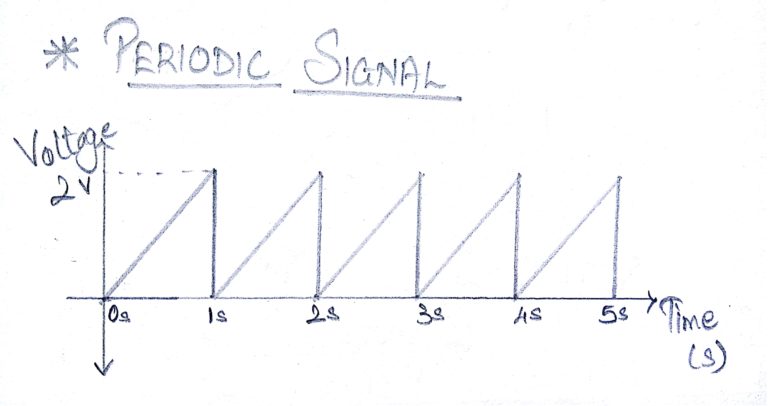
A signal is said to be periodic if it repeats itself after some amount of time.
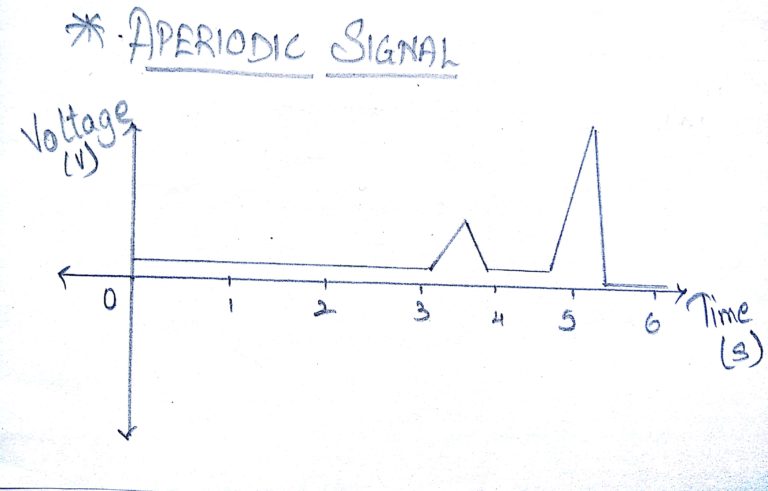
Signal which does not repeat itself after a certain period of time is called aperiodic signal.
Random and deterministic
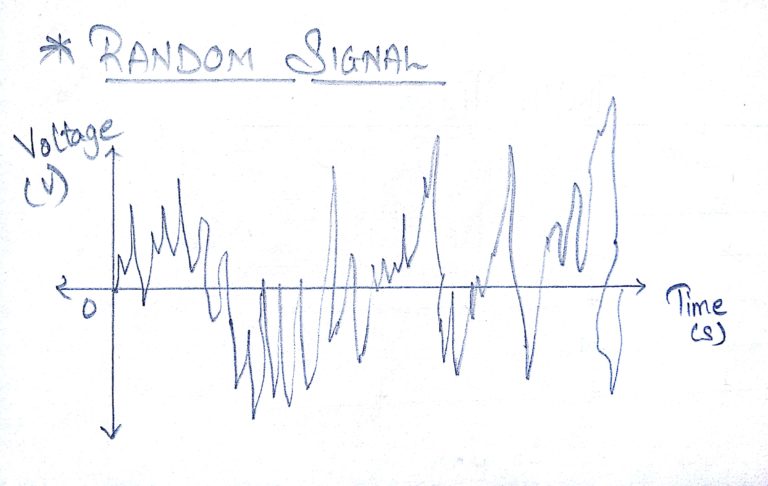
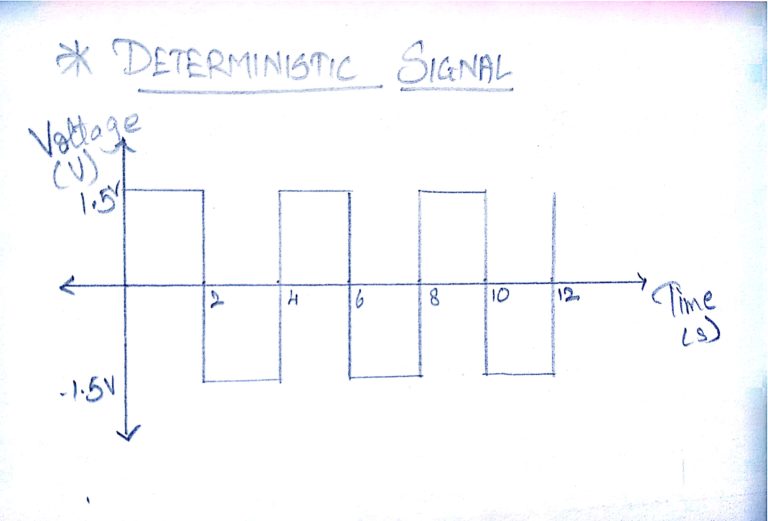
A random signal cannot be described by any mathematical function, where as a deterministic signal is one that can be described mathematically. A common example of random signal is noise.
Casual, Non-casual and anti casual
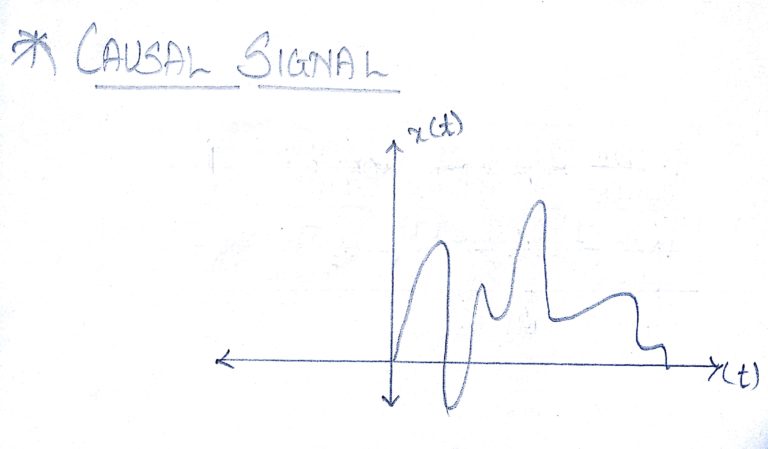
Signal that are zero for all negative time, that type of signals are called causal signals.
While the signals that are zero for all positive value of time are called anti-causal signal.
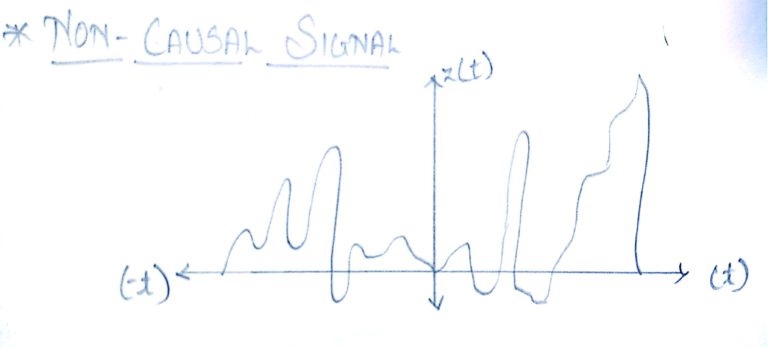
Signal that are zero for all negative time, that type of signals are called causal signals.
A non-causal signal is one that has non zero values in both positive and negative time.
Even and odd
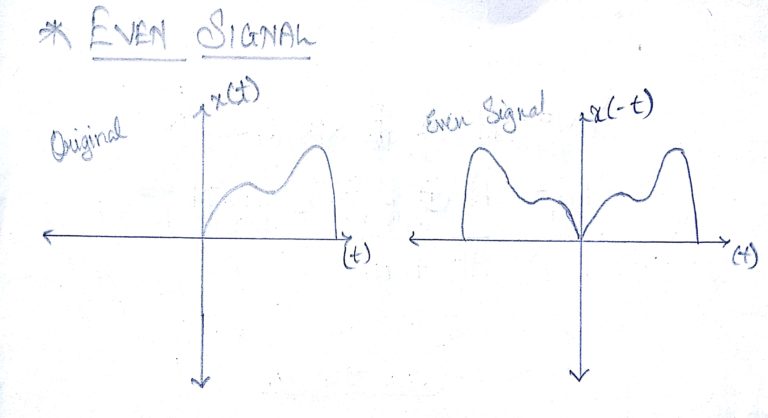
In simple words, Even signal is the mirror image of the signal on the y-axis.
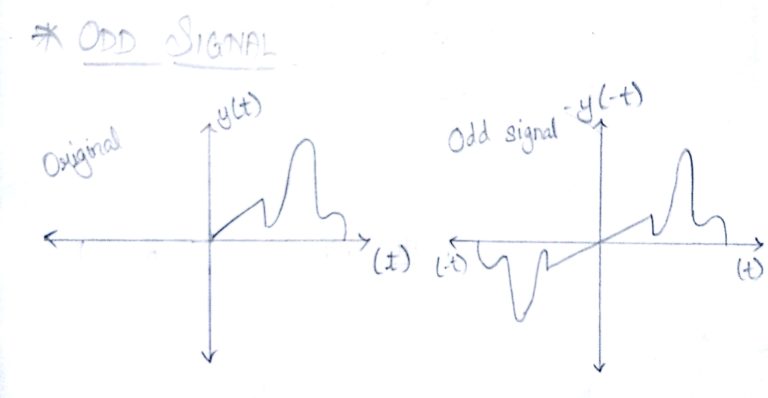
And Odd signal is the mirror image of the signal on both x and y axis.
PROPERTIES :
Amplitude-Scaling of Signal :
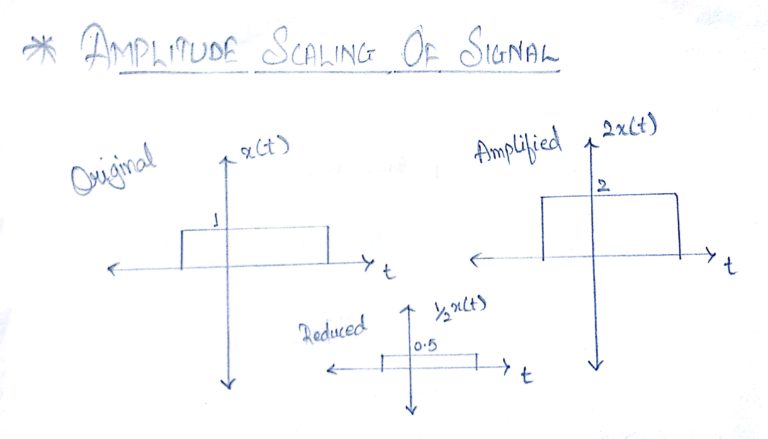
One of the properties of signals is amplitude scaling, which means we can either amplify the voltage, or reduce it by a constant. While amplifying, this constant, is multiplied with the signal, whereas while reducing, its divided from the signal. A into x of t is the amplitude scaled signal of x of t, which is the original signal, here ‘A’ is the constant and x of t is the signal.
Time-Scaling of Signal :
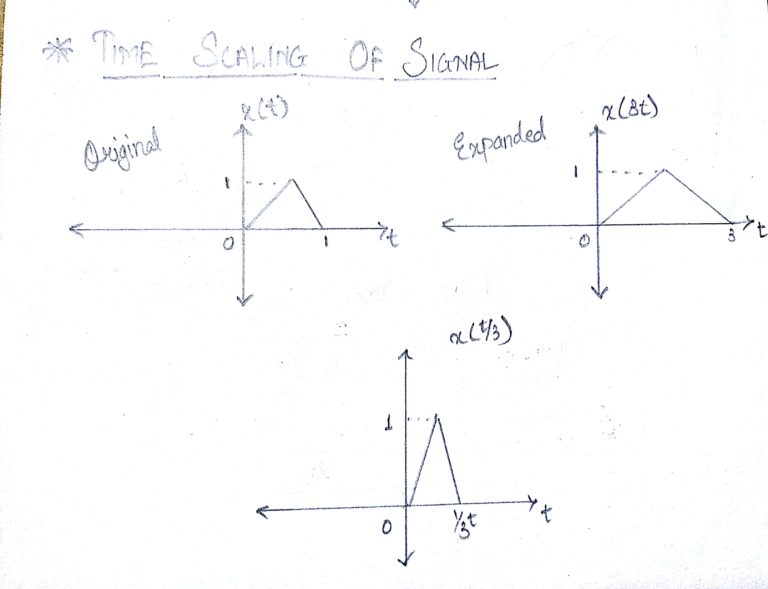
In time scaling, the signal is usually expanded or compressed. While you are watching a video, and if you have already watched that section of the video, you usually fast forward the video, this means the signal is being time-scaled, in this example it is being compressed. While you watch a slow-mo video it basically expands the time of the signal.
X of t is the original signal
And x of a t is the time scaled signal. Where ‘a’ is a constant.
Amplitude Scaling deals with the voltage axis, whereas Time Scaling deals with time axis.
Time-Shifting of Signal :
In time shifting, the signal, is being shifted completely, without, amplifying or reducing, expanding or compressing. The Axis remains the same, just the entire signal is shifted. Consider an activity that you planned to do between 1pm-2pm. Now, due to some reasons, you canceled it, and plan to do that activity between 4-5pm. Here the activity i.e. your voltage remains same. The duration of activity, that is, the time axis remains same. Just the time slot changes. This is time-shifting. Time is either advanced or delayed.
The time shifted signal of the original signal x of t is x of t minus 1. Here, The signal is advanced.